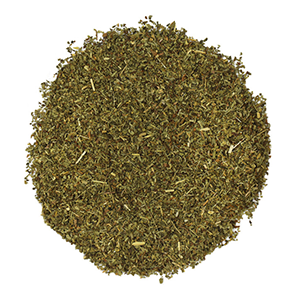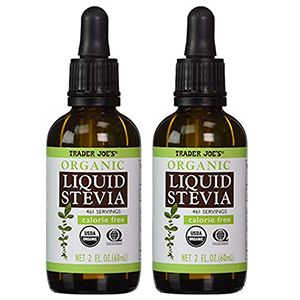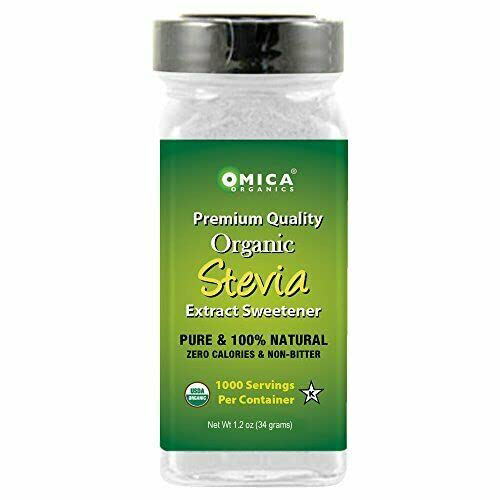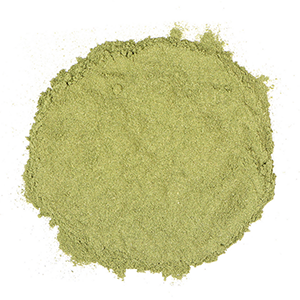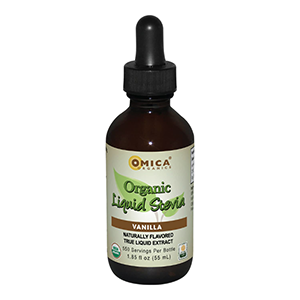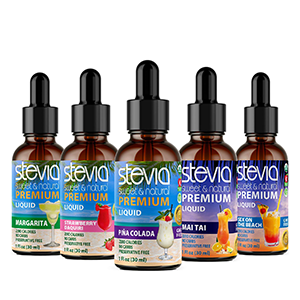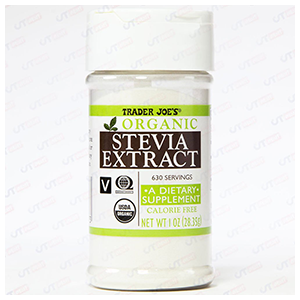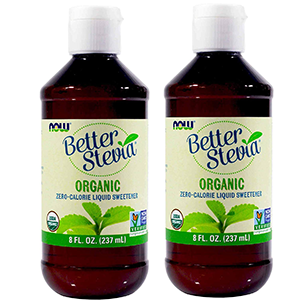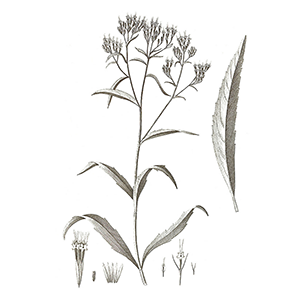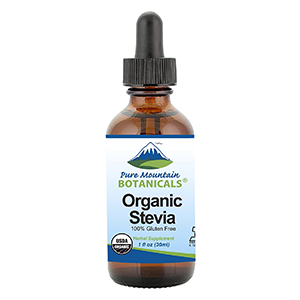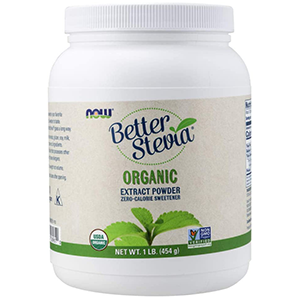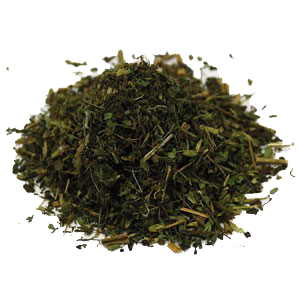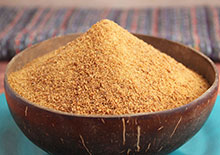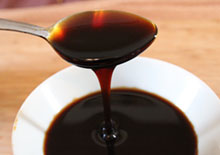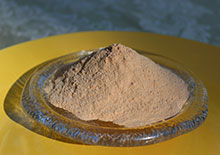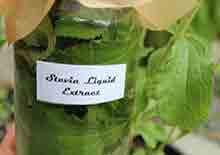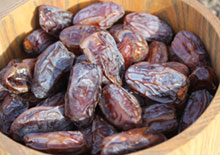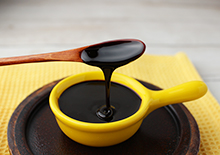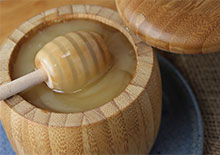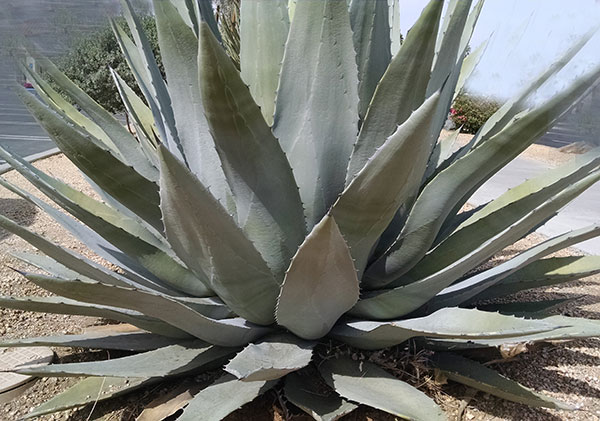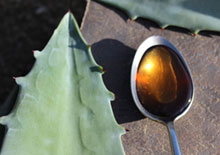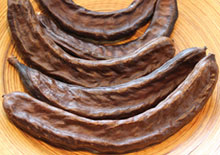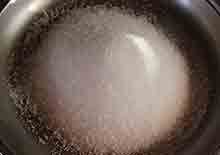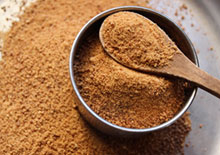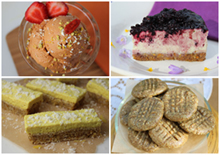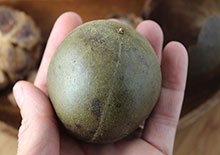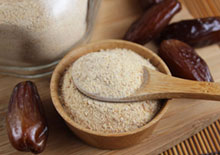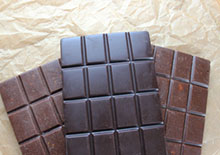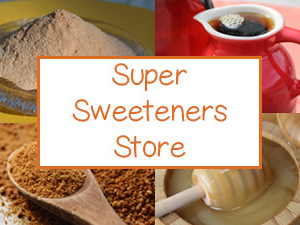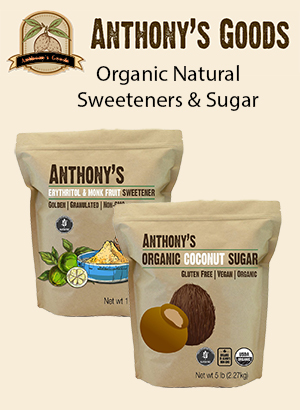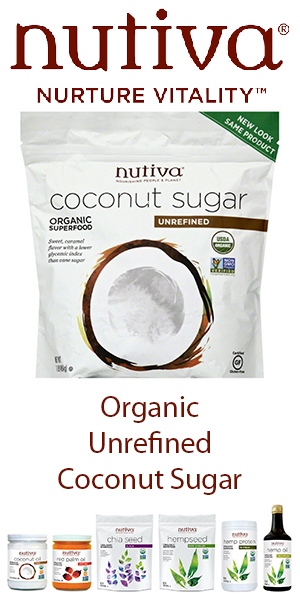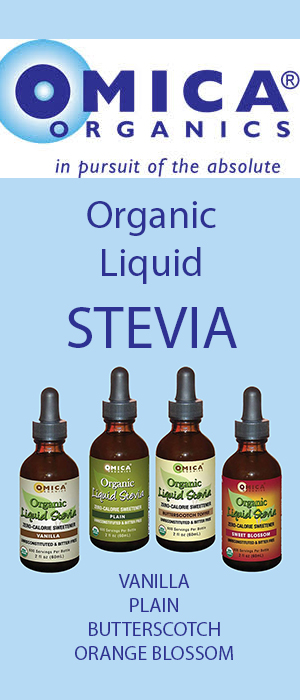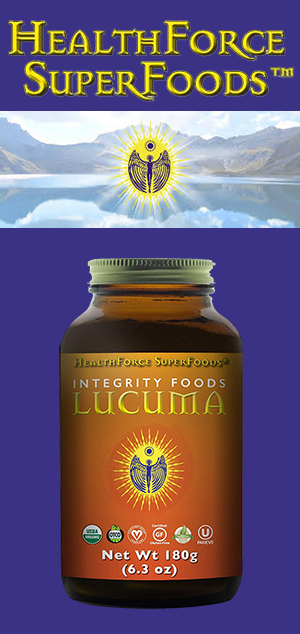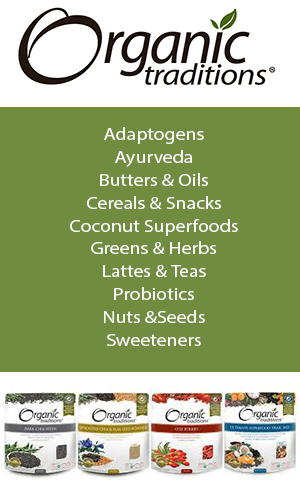- Home
- Sweeteners
- Stevia
What is Stevia Leaf? A Natural Herbal Sugar Substitute
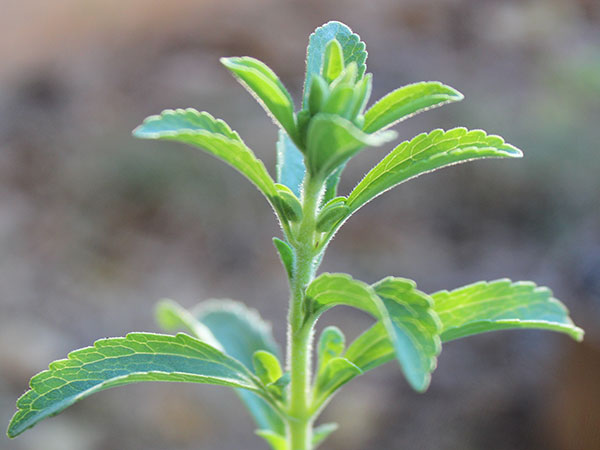
Stevia (pronounced stee-vee-ah) is a natural sweetener derived from the thick, sweet green leaves of the S. rebaudiana plant species native to South America. Growing wild in semi-arid climates of Paraguay, it has a long history of use by indigenous peoples from these regions.
Although used extensively for decades in Japan and China as a white powdered extract in commercial products and drinks, it first became popular in the U.S. in the mid 80's to early 90's when it was recognized as a valuable sugar alternative with a very sweet taste yet no absorbable sugar content or calories.
It also became particularly well-known with the introduction of the book: "The Body Ecology Diet", in which it was promoted as a #1 sweetener for candida overgrowth as it does not feed intestinal yeasts or raise blood sugar levels.
More on the subject: Is Stevia Healthy?
Stevia was banned by the FDA in the 1990's under the pressure of the
NutraSweet company, a business competitor, claiming that further
research was required to prove its safety as a sugar substitute. The Food and Drug Administration banned the sale of the sweetener from all stores in the U.S. for a period of time until eventually, due to public disapproval, it appeared back on shelves as a "dietary supplement" rather than as a "natural non-glycemic sugar."
Since 2008, the use of S. rebaudiana has been proven therapeutic and safe to consume as an herbal sweetener.
During the earlier years of stevia leaf use in the U.S., the unrefined bulk herb was the primary part used in tea blends as well as the concentrated green liquid solutions made from the powder.
Because the straight "green" powder, to some individuals, has a more licorice-like aftertaste that is less palatable, it then started to be developed for intake as a white powder as well as a liquid extract, much the same way the Japanese have used it since the 1970's. These varieties were created to make it more convenient to use and closer in appearance to other sugars most people are traditionally familiar with using.
The green, whole food forms of stevia are, of course, higher in nutrient content compared to the white powders or extracts. However, these more refined versions are still considered a top sugar substitute for those with diabetes, hyperglycemia, obesity, candida overgrowth or individuals adhering to a low-sugar or low-calorie diet.
Today, there are many more processed commercial stevia-based products available developed by multinational corporations like PepsiCo and The Coca-Cola Company, including such brands as Truvia and PureVia. These versions usually contain rebaudioside A isolates, labeled under the generic term "stevia leaf extract", as well as other ingredients like maltodextrin or erythritol, usually refined from genetically modified corn.
These brands also implement the use of chemical and bleaching techniques to create a whiter more uniform product. Although they are a much better option than Sweet'N Low, Equal, NutriSweet or other artificial sweeteners, they are a far cry from the true green leaf variety or less refined solution concentrates.
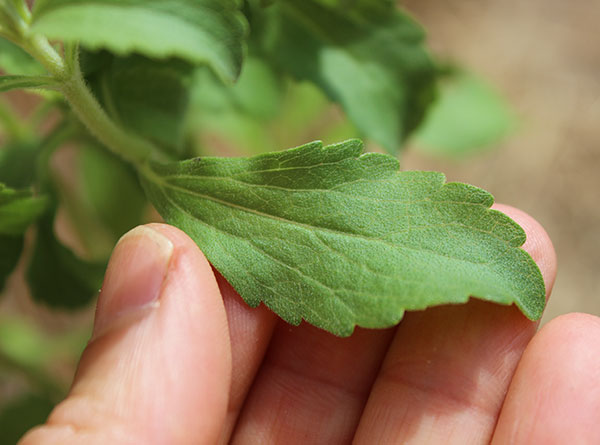
What is Stevia?
The Stevia rebaudiana plant species is related to the sunflower family (Asteraceae). Usually growing to a height of about 2-3 feet (60-91 cm), it is a fairly small shrub native to rainforest regions of South America but tolerates subtropical or moderate climates all over the world.
The sweetness of the leaves are dependent on how much sunlight it receives throughout the day. Long days of bright sun provide a high concentration of steviol glycosides.
The Sweet Taste of Steviol Glycosides
The leaves of the stevia plant are one of the sweetest substances found
in nature. The sweetness comes from the presence of steviol glycosides. These chemical compounds are glycosides of steviol, a diterpene
constituent. Steviol glycosides
specifically contain glucose and other non-sugar molecules referred to
as aglycones. The sweet flavors on the tongue are the taste receptors
reacting to the glucose element and also to a slight bitterness from the
aglycones.
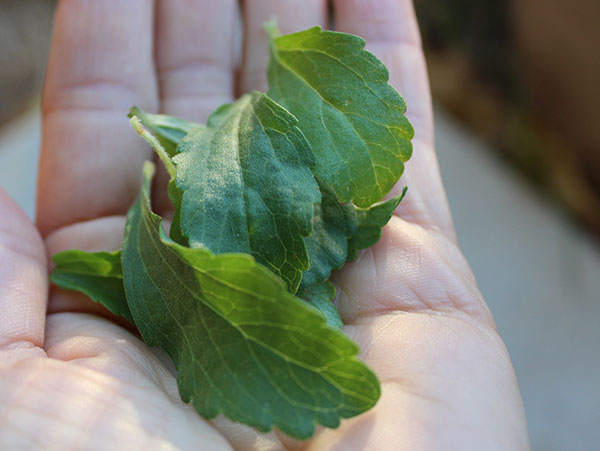
The total glycoside compounds found in the leaf include stevioside, rebaudioside A, rebaudioside C, dulcoside A and small amounts of rebaudioside B, D and E. Stevioside and rebaudioside A are usually found in greater proportions and are the main components isolated for commercial use because they contain higher levels of sweetness.
There is some technical controversy about exactly how much sweeter stevia is compared to white sugar or sucrose, but generally is reported to be between 30 to 300 times sweeter depending on how it is extracted or refined.
Rebaudioside A, being the sweetest compound found in the leaf, is often a key ingredient isolated and extracted for use in many commercial products and marketed under the generic name "stevia leaf extract" or the trade name "Rebiana."
General Metabolic Pathway
When consumed, the glycoside compounds remain intact until they reach the large intestine, where gut bacteria convert steviol glycosides into glucose and steviol.
This is also similar to the way monk fruit sweetener, another sugar substitute, is metabolized.
The glucose is utilized by beneficial microbes, while steviol is primarily metabolized by the liver and excreted via the urine as steviol glucoronide.
When forms of stevia are ingested the glucose element is
not absorbed into the bloodstream, a characteristic that makes it a non-glycemic sugar alternative. Current chemical analysis of steviol glycosides shows no toxic effects apparent in humans tested and studied.
History of Use
Stevia, also called sweet herb or ka'a he'ê, has been used by the Guarani Indians of Paraguay for hundreds of years in preparations with other herbs, like yerba mate or pau d'arco, or for medicinal purposes such as stomach upset. The leaves were often chewed or brewed as a tea to provide a sweet taste that balanced other more bitter herbs. Stevia still grows wild in parts of South and Central America, but is now also cultivated for export.
There was some European interest in growing and processing stevia for use as a sugar substitute during World War II, but it never quite developed and other artificial sweeteners dominated the sugar shortage, primarily saccharin. Today, the plant is cultivated extensively in Asian countries, especially China, with the stevioside compound widely used as an approved food additive in many Asian countries.
It was first imported to the U.S. from Paraguay in 1982 by SweetLeaf, Wisdom Natural company founder James May, who was the first to market the dried leaves as an alternative natural sweetener.
What Does Stevia Sugar Taste Like?
Some people like
it immediately and for others it is an acquired
taste. The green leaf powder, infusions or extracts have a stronger
flavor and can have a slightly licorice-like after taste, especially if
you
use too much. However, they can be easily camouflaged in recipes and
drinks.
Other refined stevia sugars or extracts, usually a
white powder or clear liquid, do not have this component and are better
for those who find the raw green taste overpowering.
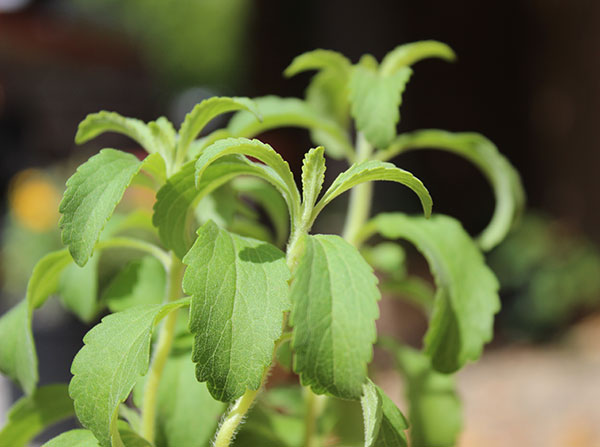
Growing Stevia in Your Garden
We always promote growing your own foods and superfoods whenever possible and the stevia plant is well tolerated in many semi-arid climates above freezing temperatures. It is an easy plant to grow and is naturally resistant to many potential pests and diseases. Because the seed is harder to germinate directly, with about a 10% success rate, we usually advise purchasing a seedling start or using a cutting from another plant.
Sometimes starts are available at local nurseries, depending on where you live, but they can also be ordered by mail. The leaves are harvested after the summer months when they are at their prime. It usually dies back with the first hard frost, but leaves will develop at the base of the plant the following year if temperatures don’t get too far below freezing.
Stevia Benefits as an Herbal Sweetener
Good for Diabetics, Helps Regulate Pancreas
Because the glucose containing steviol glycosides are not absorbed in the bloodstream, blood sugar levels remain stable and unaffected by intake. Various studies show that this effect has a positive influence on regulating the pancreas and may be a healthy sugar alternative for those with diabetes.
In a study observing the blood glucose-lowering properties of the extracts and impact of stevioside and steviol on insulin release, it was concluded that "stevioside and steviol stimulate insulin secretion via a direct action on beta cells. The results indicate that the compounds may have a potential role as antihyperglycemic agents in the treatment of type 2 diabetes mellitus."
Another 2013 study analyzing the roles of S.rebaudiana on "abrogating insulin resistance and diabetes", it was observed that through several different pathways the sweetener eventually lead to "antihyperglycemic reactions." In the Journal of Pharmacy and Bioallied Sciences, an additional study was published showing antidiabetic activity and its revitalizing effect on the pancreas. (Source)
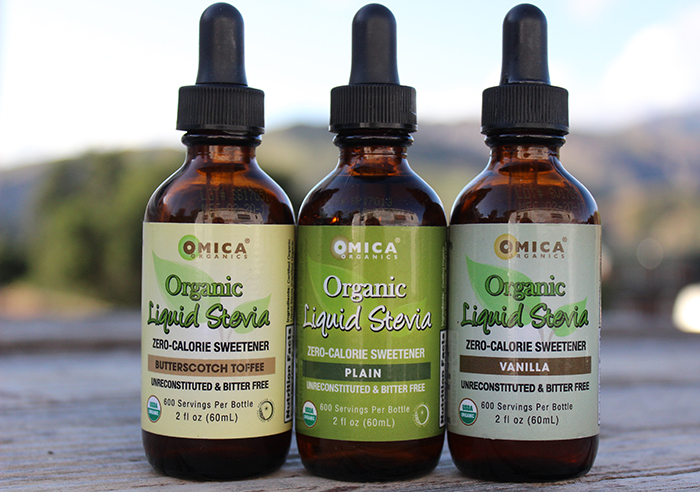
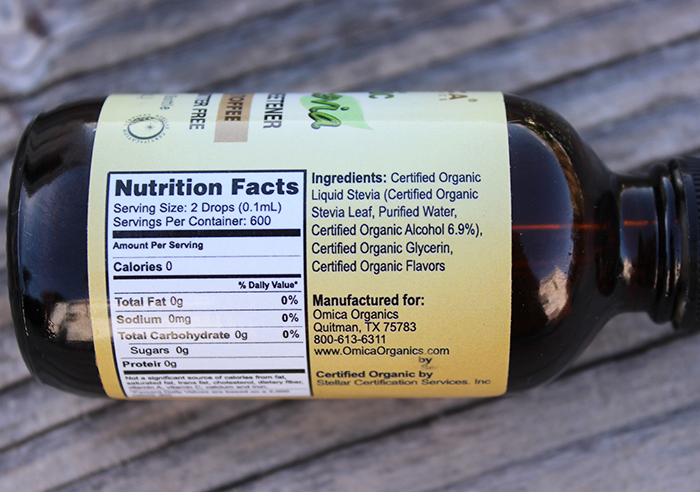
May Help Reduce Blood Pressure
There is some evidence that the herbal sweetener might be helpful for hypertension or reducing blood pressure. In a 2010 research investigation it was reported that the "Evaluation of two long-term studies indicates that stevia may be effective in lowering blood pressure in hypertensive patients." However, in earlier studies, the isolated molecule rebaudioside A had no effect on blood pressure, while the specific stevioside component was significantly effective in blood pressure reduction.
Its blood pressure-lowering potential is also believed to have something to do with the diterpene compound which is a known anti-inflammatory agent, but more research is currently required.
Good for a Low Sugar Diet or Candida Overgrowth
When people have candida overgrowth, or serious illnesses such as cancer, eating any form of sugar is not advised because it encourages their development. Stevia is the exception, however, because its glucose element is not absorbed by the body, nor does it feed the fungal yeast strains that tend to predominate other friendly microbiota, such as Lactobacillus and Bifidobacterium.
Using the low-calorie sweetener can also be of benefit to those wanting to reduce excess body weight by limiting the amount of carbohydrates consumed throughout the day.
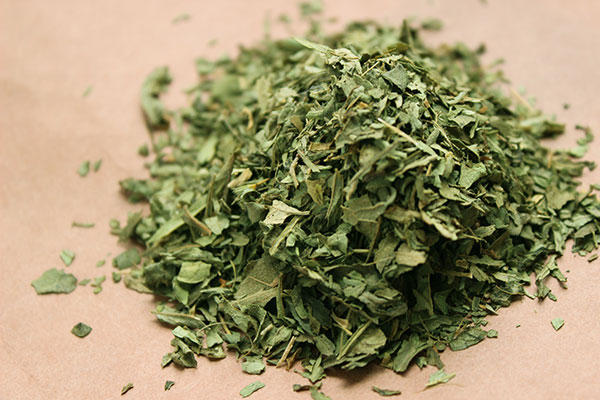
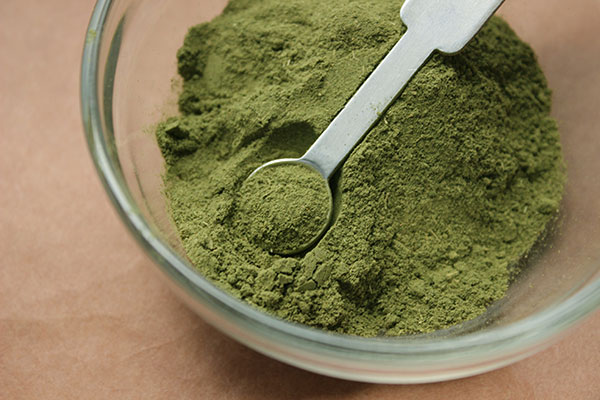
Stevia Nutrition
With many people searching for healthier sugar substitutes for diabetes, obesity and candida overgrowth, the non-sugary sweet components make S. rebaudiana a valuable alternative, replacing artificial sweeteners as well as other high calorie sugars.
Stevia's list of medicinal and nutritious properties are present to a larger degree in the whole green leaf-based products rather than the refined versions. White powders and isolated extracts, are chiefly created to concentrate the sweet elements and have less actual nutritional value as they have been stripped of trace minerals and the green chlorophyll component.
Other Health Benefits
In a 2013 study published in the Journal of Diabetes and Its Complications, it was shown that the leaves also have an antioxidant effect with the ability to reduce oxidative stress and "results suggested that stevia leaves do have a significant role in alleviating liver and kidney damage."
Both the green herb as well as the white powder and extracts appear to help prevent tooth decay and cavity formation. Not in the same way that xylitol does, but it is often found as an ingredient in chewing gums and tooth pastes as a sugar substitute. (Source)
Is Stevia Beneficial for Everyone?
Although stevia might be a beneficial alternative to a low sugar or low-calorie diet, it may not be appropriate for all people. There is some controversy about how the sweet element can essentially trick the body into thinking it is going to receive glucose and, when it doesn't, is believed to possibly cause fatigue, hypoglycemia and adrenal stress.
Our personal opinion is that stevia may affect different people with unique body types in different ways and in a dose-dependent manner. It is therefore important to listen to your individual response when using the sweetener both in small and larger quantities. In addition, there may also be a great variance between whole leaf stevia and its isolated concentrates.
Likewise, for some people, it may be better to use it to cut the glycemic index of other sugars or carbohydrates consumed, rather than using it strictly on its own.
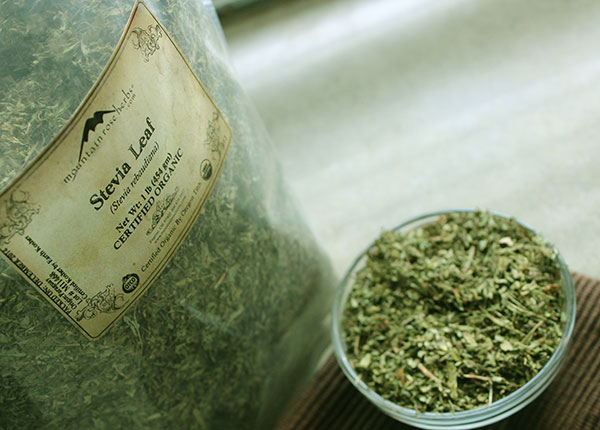
Types of Stevia
Dried Green Powder or Leaf
The dried green powder or leaf is the most nutritious way to consume stevia, but it also tends to have a stronger flavor. You can purchase the dried leaves and grind them down for quality freshness or tincture the leaf in alcohol or glycerin. It is often sold in bulk at some health food stores or can be ordered by the pound.
White Refined Powders
White powders are refined versions of straight stevioside or rebaudioside A and have a more palatable taste for some people. Unfortunately, most refined white powders or crystals contain other ingredients like maltodextrin, used primarily as an anti-clumping agent. Maltodextrin is a polysaccharide usually derived from genetically modified corn using chemicals and bleaching techniques.
Liquid Extracts
Liquid extracts come in dropper bottles and are extremely convenient to use. They can be made from the green leaf or more refined stevioside and/or rebaudioside A extracts. Some brands come in a variety of flavors.
Learn how to make your own homemade liquid stevia extracts for a fraction of the cost of many store-bought brands.
2016 Comparison of Some Commercial Stevia Sweeteners
- Omica Organics - Organic liquid stevia made from organic stevia leaf, purified water, organic alcohol (6.9%), certified organic vegetable glycerin and sometimes flavored with extracts or natural flavors. They also offer additional testing for solvent residues used in the the extraction process.
- Body Ecology - Company owned by Donna Gates made from organic stevia leaf, purified water, organic alcohol (6.9%) and organic vegetable glycerin.
- SweetLeaf, Wisdom Natural brand - Founded by James May, but is now owned by larger corporate interests, so quality is not what it used to be in our opinion. It is no longer sourced from Paraguay, but China. The powder or crystallized sugars are made from inulin fiber and organic stevia extract. The stevia solutions are made from purified water, organic stevia leaf extract and different flavored oils, extracts or natural aromatics.
- Stevia in the Raw - Also owned by the same company as Sweet'N Low, made from non-organic dextrose and stevia extract.
- Truvia - A Coca-Cola owned product made from non-organic erythritol, stevia leaf extract and natural flavors. Erythritol is usually made from genetically modified corn, unless is states so on the label.
- PureVia - A PepsiCo owned product made from non-organic dextrose, rebaudioside A and natural flavors.
How to Use
The green powder works very well in various dessert recipes and can be blended with other natural sweeteners, like raw honey, coconut sugar or agave, to decrease the glycemic index.
Because of the stronger flavor and
licorice-like aftertaste, it is best used camouflaged into dressings,
sauces, shakes or smoothies rather than used straight in teas. It also
does not completely dissolve in liquids as it is a fibrous green leaf powder.
Fresh whole leaves, however, work very well in herbal tea infusions and can be strained out.
The more refined white powders can be purchased in individual packets or as a bulk sugar and can be used in the same way as the green powder. The white powder or liquid solutions are a more convenient option for some people, without the potential aftertaste.
Our personal favorite brand, Omica Organics, provides liquid solutions come in a number of different flavors and are delicious additions to most any sweet beverage or to flavor desserts or raw chocolates.
General Powder Measurements
1/8t white powder = 1t sugar
2T white powder = 1C sugar
All forms, but especially the white powder and liquid extracts, are Very sweet and you don't need much to attain the sweet taste you desire. Liquid solutions are very concentrated and are harder to use in recipes but can be blended in for added sweetness, using only a few drops for a cup of tea or by the dropper full for other recipes.
Precautions:
Although current research indicates no toxic side effects from regular use, it is best to consume stevia in low doses and not overdo intake, especially of refined versions. Seek the advice of your healthcare advisor if diabetic or have other serious medical conditions.
Shop Related Products (About Affiliates & Amazon Associate Paid Links)
Affiliate Disclaimer: This section contains affiliate product links. If you make a purchase through our recommended links, we receive a small commission at no additional cost to you. Thanks for the support.
